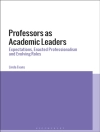Astana, the capital city of the post-Soviet Kazakhstan, has often been admired for the design and planning of its futuristic cityscape. This anthropological study of the development of the city focuses on every-day practices, official ideologies and representations alongside the memories and dreams of the city’s longstanding residents and recent migrants. Critically examining a range of approaches to place and space in anthropology, geography and other disciplines, the book argues for an understanding of space as inextricably material-and-imaginary, and unceasingly dynamic – allowing for a plurality of incompatible pasts and futures materialized in spatial form.
Mục lục
List of Maps, Figures and Tables
Acknowledgments
Note on Transliteration and Translation
Introduction: Pathways into the ‘City of the Future’
- Astana, Kazakhstan and the Global Lives of Modernist Urbanism
- Anthropology’s Space
- Space and Time
- Theorizing the City Anthropologically
- Fieldwork in the ‘City of the Future’
Chapter 1. Materializing the Future: Images and Practices
- Deconstruction, Reconstruction
- The Cityscape of the Future
- Becoming ‘Contemporary’
- The Roots of Disenchantment, and Its Limits
Chapter 2. Performing Urbanity: Migrants, the City and Collective Identification
- Identities beyond Representation
- Urbanity and Rurality in Kazakhstan
- Migration to Astana
- Migrants’ Stories
- Kumano: A Pioneer Settles Down
- Kirill and Gisele: Love on the Move
- Bakytgul: Caught Up in Deferrals
- Aynura: The Girl Who Played the Accordion
- Madiyar: The Struggling Southerner
- Embodying Identity
Chapter 3. Tselinograd: The Past in the ‘City of the Future’
- Building Tselinograd
- Nostalgia and Spatial Intimacy
- Walking in Tselinograd
- Tselinograd’s Glory
Chapter 4. Celebration and the City: Belonging in Public Space
- What Is Public Space?
- The Setting: City Squares
- Public Holiday Celebrations
- …in Late-Soviet Tselinograd
- …in Astana
- Whose Celebration, Whose City?
- Public Space Reopened
Chapter 5. Fixing the Courtyard: Mundane Place-Making
- Shifting Frameworks
- Material Place-Making in the Dvor
- Digression: Things Make a Difference
- The KSK Takeover
Chapter 6. Playing with the City: ‘Encounter’ in Astana
- What is ‘Encounter’?
- Game Types
- ‘Encounter’ as Play
- Play or Politics: Carnival, Stiob and ‘Encounter’
- ‘Encounter’s Creativity’
- Creasing Space
Conclusion
References
Index
Giới thiệu về tác giả
Mateusz Laszczkowski is Assistant Professor at the Institute of Ethnology and Cultural Anthropology, at the University of Warsaw, Poland. In 2007-2012 he conducted his doctoral research at the Max Planck Institute for Social Anthropology in Halle/Saale, Germany.












